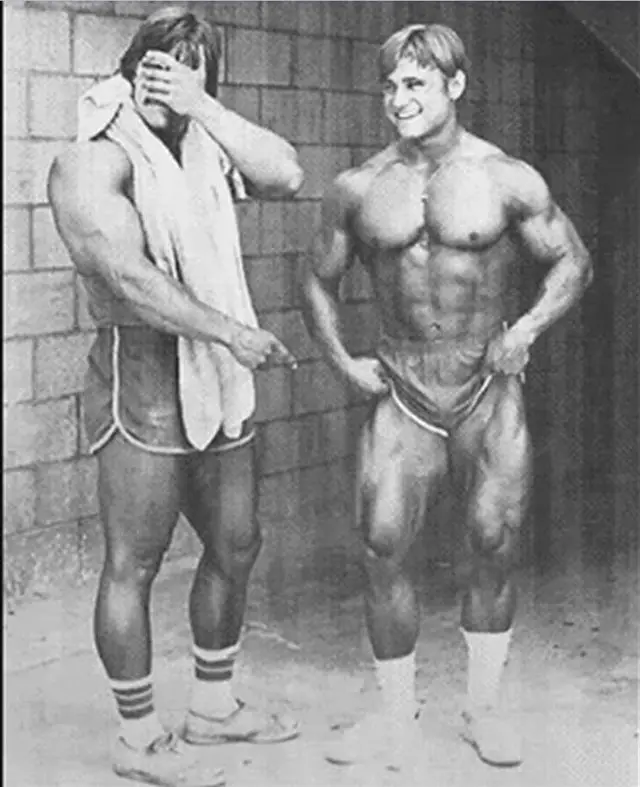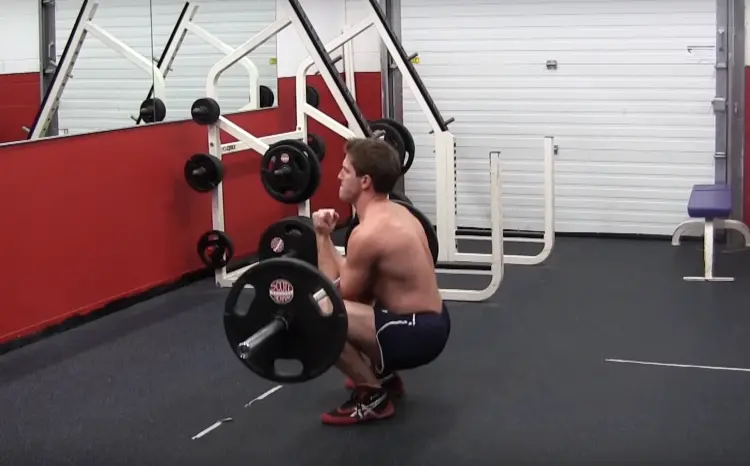From memes about skipping leg day to inspirational videos of Tom Platz rhythmically bouncing up and down with a heavy barbell, few workouts seem to inspire as much fear and as much enjoyment as leg day. For the majority of trainees, myself included, leg day consists primarily of squatting, deadlifting or lunging. These three basic components run through my routines which, after a decade worth of training, has admittedly gotten somewhat tedious.
The boredom of doing the same exercises, again and again, serves as inspiration for this article. Seeking to spice up my workouts, I turned to the physical culturists and bodybuilders of yesteryear who, thankfully, proved far more inventive in their training than I could ever be.
So without further ado, today’s post revolves around three forgotten or lesser-known leg exercises – their history, their effectiveness and how to situate them within your own training session. I’ll hold off promises of mass muscle gain in a short amount of time but I will promise at least some variety in your training!
The Humble Sissy Squat
In a world considerably more considerate when it comes to name-calling, ‘Sissy Squat’ is perhaps not a term you want to use too flippantly with your training partners. Despite its odd labeling, the Sissy Squat is, to my mind, one of the most effective leg exercises unknown by most lifters today. Popularised initially by Monty Wolford, a mid-century American bodybuilder, and subsequently, by the legendary trainer, Vince Gironda, the Sissy Squat acts as an intense isolation exercise for the quads. (1)
Simple to understand but difficult the master, the exercise is best done beside a squat rack or steady pole. With one hand on the rack and the other either on your chest or holding a dumbbell, you get up on the balls of your feet, bring your heels together and squat down while leaning back – as shown in the video below.
Now what’s interesting about the Sissy Squat was the great faith placed in it by Vince Gironda. Gironda, who trained several bodybuilding champions, including the first Mr. Olympia Larry Scott, actually promoted the Sissy Squat over the traditional back squat for leg development. (2) To understand why I’m writing about the Sissy Squat, you really have to know about Gironda himself, as it was Gironda who tirelessly lobbied for the exercise itself. Himself a bodybuilder of some note, Gironda was among the most highly sought after bodybuilding coaches of the 1960s and 1970s. (3)
Level Up Your Fitness: Join our 💪 strong community in Fitness Volt Newsletter. Get daily inspiration, expert-backed workouts, nutrition tips, the latest in strength sports, and the support you need to reach your goals. Subscribe for free!
Situated in Venice Beach, California, Vince – whose nickname incidentally was the ‘Iron Guru’ – trained Hollywood stars, top athletes and a series of bodybuilders. In his desperate bid to produce results, Vince regularly trialed and created entirely new exercises or very clever variations on existing exercises. Inspired by his friend Monty Wolford, Vince’s love of the Sissy Squat fed into his reputation for being a creative genius. (4) Thus when Vince began promoting the exercises, others within the field of bodybuilding listened and took note.
Why did Vince care so much about the Sissy Squat and commit the near sacrilegious act of favoring it over the back squat? The rationale behind this was twofold – In Gironda’s mind, the back squat built the glute muscles more than the quads, thereby making it a poor choice for bodybuilders seeking to build their legs. Ever outspoken, Vince often called the back squat the best waist builder in bodybuilding but a poor leg exercise. This, as you can imagine, did not win Vince many friends. (5)

Secondly, the Sissy Squat created a burn in the quads unrivaled by other exercises and from feedback among his bodybuilding clients, helped to sharpen out and define their leg muscles. Vince, if nothing else, always cared about results. So from the 1960s to 1980s, Sissy Squats were a common favorite of top-level bodybuilders and were often the go-to exercise for those wishing to build the iconic teardrop quad sweep. (6) That they fell out of favor from the 1990s onwards is most likely due to Vince’s own declining stature in bodybuilding at this time.
For modern trainers, the Sissy Squat is probably best done immediately after a set of squats, preferably for high reps. Or, if a vintage workout is what you’re craving, you can do as Gironda’s clients did and load up heavy for the Sissy Squat. Place a dumbbell or plate against your chest and squat away to your heart’s content. You may get some funny looks but there was a reason why Gironda and others favored the Sissy Squat so much.
The Strength Building Zercher Squat
Aside from my brief forays with a powerlifting gym, I have rarely seen someone use the Zercher Squat as part of their training. The reason for this has always perplexed me. Unlike other squat variations, the Zercher Squat is almost impossible to cheat in. It forces the trainee to maintain an upright position and engages the core muscles in a way, unlike other leg exercises. It is for this reason that so many lifters used the Zercher Squat to learn how to brace properly during exercise. So how does one perform a Zercher Squat?
Thankfully, it’s quite a simple thing to execute. Begin with a wider than a normal squat stance, place a barbell across the crook of your arm, and, leading with the hips, squat down and push back up through the heels. Much like the Sissy Squat, the Zercher Squat is bound to cause some strange looks in the gym but, much like the Sissy Squat, there’s a reason the exercise was invented and a reason why it has still larger stood the test of time.
Now squatting with the barbell across your arms leads to a very obvious and important question. Who came up with this idea? The answer brings us back to the 1930s when an American strongman, Ed Zercher, was desperate to increase his strength at all costs. (7) There was just one problem – gyms, and most certainly powerlifting gyms – were a real rarity at that time. This meant that a certain amount of imagination was needed to perform one’s workout with any sort of intensity.
At a time when many lifters did not yet have access to squat racks, people resorted to some very strange but nonetheless effective ways of squatting heavy. Now the most obvious example of this was, of course, the ‘Steinborn Squat’, named after the German strongman Milo Steinborn. In essence, the ‘Steinborn Squat’, as shown below, helped lifters flip a heavy barbell onto their backs. Milo even managed to do this with 500 lbs.!(8)
In a similar vein, Ed Zercher created the Zercher Squat as a means of allowing him to squat heavy but without the need to flip a barbell onto your back. The beauty of the Zercher Squat was that you could load the barbell on the floor and simply pick it up. It was an exercise unique to Zercher for many years but, owing to his strength, others became interested in how he built his body. How strong was Ed? At a weightlifting meet in the 1930s, he posted the following numbers:
Level Up Your Fitness: Join our 💪 strong community in Fitness Volt Newsletter. Get daily inspiration, expert-backed workouts, nutrition tips, the latest in strength sports, and the support you need to reach your goals. Subscribe for free!
- One Hand Snatch 120 lbs.
- One Hand Clean & Jerk 130 lbs.
- Two-Hand Military Press 170 lbs.
- Two-Hand Snatch 145 lbs.
- Two-Hand Clean & Jerk 200 lbs.
This marked a total of 765 lbs at a bodyweight of 156 lbs! (9) The Zercher Squat soon began to be popularised through influential strength magazines like Peary Rader’s Ironman magazine alongside Zercher’s own work with the Amateur Athletic Union, which then oversaw American weightlifting.
In the 1960s, the Zercher Squat actually became a sanctioned United States All-Round Weightlifting Association (USAWA) lift, which meant that future lifters could test their mettle in the Zercher. (10) Since then, it has remained a darling of the strength community but unknown to many trainers.
So for those interested in implementing the Zercher, what is the easiest and best means of doing it? First, and something I wish someone had told me the first time I tried the exercise, wrap a towel around the bar or, at the very least, use some form of padding to protect your elbows.
Yes, you can do without but it takes it toll otherwise. Comfort concerns aside, the Zercher Squat is a fabulous power lift in every sense of the term. It works best using low reps, heavyweight, with plenty of rest in between. Almost immediately after stepping out of the squat rack, you’ll get a sense of how taxing and effective the lift can be.
The Immortal Hack Squat
The Hack Squat, despite what you may think, is not that machine in the gym which rarely seems to get any attention. It refers to a barbell exercise popularised over a hundred years ago by the Estonian wrestler and weightlifter George Hackenschmidt . Hackenschmidt, whose career was recently documented by Rogue Fitness, was a celebrity athlete of the age.(11)
Known primarily for his wrestling bouts with the American wrestler Frank Gotch, which captured the imagination of the British and American sporting world, ‘Hack’ was equally as comfortable in the gym as he was on the mat. (12) Prevented from reaching his full lifting potential due to injury, Hackenschmidt was still regarded by many in the early 1900s as one of the strongest men of the era.
Much like the Zercher Squat, the ‘Hack Squat’ was borne more out of necessity than anything else. In the early 1900s, exercisers were more likely to squat on their tippy-toes, holding light dumbbells, than they were to squat heavy. Barbells were still a relative rarity and squat racks were non-existent. (13)
The idea of squatting with a heavy barbell across your back and with your feet flat on the ground did not catch on until the 1920s when Milo Steinborn, discussed above, helped popularise this new technique. So for those in the early 1900s, they were faced with two choices. Either squat on your tippy-toes or think of something else to do. Thankfully Hackenschmidt used his creativity.
First seen in his 1908 physical culture work, The Way to Live, the Hack Squat marks an interesting addition to a leg day repertoire. Begin with a barbell placed behind your back, take hold of the bar with an overhand grip, and squat down, remembering to keep the upper body as upright as possible throughout the lift. (14) It’s somewhat awkward to do initially and, if you suffer with poor ankle flexibility like me, is best done with the heels elevated.
But what does it do and how does it differ from a back squat? In my own experience and in the opinion of others far more knowledgeable than myself – Charles Poliquin was a vocal advocate of the exercise, the Hack Squat isolates the quadriceps in much the same way as the Sissy Squat, discussed above. (15) Keeping the upper body upright effectively removes the posterior chain from the exercise, ensuring that its all quads from the way up. The intense effect created by the Hack Squat means that many trainees will struggle with relatively light weights and still get a good workout. Unlike the Sissy Squat or the Zercher Squat, the Hack Squat is probably one of the oldest forms of squatting still in existence today, having been written about initially in the early 1900s.
So how can we celebrate its existence by bringing it into our workouts? For Poliquin, the Hack Squat was a key exercise in his post-exhaustion routines which, as the name suggests were not particularly easy. (16) Such routines involved a circuit of Hack Squats, Leg Presses, and Leg Extensions. For those seeking an easier introduction to the exercise, Hack Squats make a great opening exercise to your workout or a post-back squat/leg press finisher. Generally speaking, its an easier made for high reps and strict form. If you want to build yourself to be a Hack in your own right, the Hack Squat is a great start.
Why Bother?
Having used these exercises extensively in my own training, a question I’m often asked by others in the gym is why bother? Why are you doing these exercises? For me, the answer always stems from the need for variety and practicality. Many, I suspect, share my habit for boredom with the same exercises done week in and week out. Sometimes you need to try something new to hit the muscles from a different angle or figure out a way of exhausting yourself after a heavy set.

This is where exercises like the Sissy Squat or Hack Squat become useful. There is, to my mind at least, nothing more fun than mastering a new exercise or introducing a new component to your training be it a different rep scheme, rest protocol or exercise. That is why I bother.
Coupled with this is an innate sense of practicality. As part of my work, I’m often on the road traveling and forced to use the best (and worst) hotel gyms America has to offer. Oftentimes I don’t have the privilege of using a squat rack and it is here where the Zercher shines. Likewise, when I was seeking to improve my bracing for deadlifts and traditional squats, my knowledge of the Zercher paid dividends.
When I wanted to bring up my quads muscles and found that leg extensions simply weren’t doing it, I turned to Hack Squats and Sissy Squats with great results – I’ll never be Mr. Olympia but I did increase my strength and build a little muscle. The practicality of these exercises cannot be underestimated. They help deal with specific issues and do so effectively.
And hey, if we’re being serious for a moment, who doesn’t like to impress others with their knowledge of secret or elite lifts? If nothing else, let your ego guide you to these exercises!
References
- Darden, Ellington. Super high-intensity bodybuilding. Perigee, 1986.
- Wayne, Rick. Muscle Wars. BookBaby, 1985.
- Ibid.
- Darden, Super high-intensity bodybuilding.
- Gironda, Vince, and Robert Kennedy. Unleashing the Wild Physique: Ultimate Bodybuilding for Men and Women. Sterling Publishing Company, 1984.
- Darden, Super high-intensity bodybuilding.
- Yarnell, Dave. The Old School StrengthTraining Secrets Bible. Dave Yarnell, 2019.
- Todd, Terry. “Historical Opinion: Karl Klein and the Squat.” Strength & Conditioning Journal 6, no. 3 (1984): 26-31.
- LaPointe, Roger, ‘How Good Was Ed Zercher?’, USAWA. Available at: http://usawa.com/how-good-was-ed-zercher/.
- Ibid.
- ‘Rogue Legends Series Chapter 3: Hackenschmidt’, Rogue Fitness. Available: https://www.roguefitness.com/theindex/video/hackenschmidt-live-premiere.
- Todd, Terry, and Spencer Maxcy. “Muscles, memory: And George Hackenschmidt.” Iron Game History 2, no. 3 (1992): 10-15.
- Todd, Terry. “Historical perspective: The myth of the muscle-bound lifter.” Strength & Conditioning Journal 7, no. 3 (1985): 37-41.
- Hackenschmidt, George. The Way to Live: Health & Physical Fitness. Health & Strength, Limited, 1911.
- Poliquin, Charles, ‘Build Massive Legs with Post Exhaustion’, StrengthSensai, 2014.
- Ibid.










My grandfather created the Sissy Squat out of a necessity to build his quads without putting strain on his back. Great to see a write up here, nice job! 🙂
– Marcus Wolford
Hi Marcus, I hope this mail finds you well. Phew! Thank you for the kind words – my heart jumped into my mouth at the prospect of misrepresenting your grandfather!
I don’t think that’s Arnold with Platz. It looks like it might be Roger Callard.